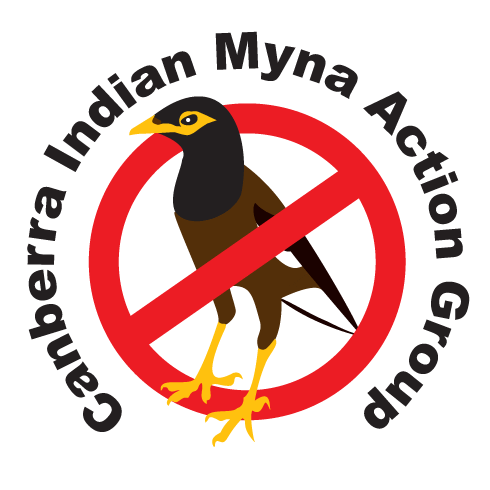Scientific Papers
Investigating responses to control a comparison of common myna behaviour across areas of high and low trapping pressure.
Diquelou, MacFarlane & Griffin 2018
(PDF, 502 KB)
Noisy neighbours and myna problems. Interaction webs and aggression around tree hollows in urban habitats.
Rogers et al.
(PDF, 910 KB)
Detrimental effects of urbanization on the diet health and signal coloration of an ecologically successful alien bird.
Peneaux et al. 2021
(PDF, 1 MB)
Tasting novel foods and selecting nutrient content in a highly successful ecological invader, the common myna.
Peneaux et al. 2017
(PDF, 892 KB)
The role of invasion and urbanization gradients in shaping avian community composition.
Andrew M. Rogers, Andrea S. Griffin, Francoise Lermite, Berndt van Rensburg, Carla Archibald and Salit Kark
Its a trap! Invasive common mynas learn socially about control related cues.
Diquelou, Griffin 2019
(PDF, 273 KB)
The Impact of Two Exotic Hollow-nesting Birds on Two Native Parrots in Savanah and Woodland in Eastern Australia.
Pell & Tidemann (1996).
(PDF, 1.19Mb)
Is It Benign or Is It a Pariah? Empirical Evidence for the Impact of the Common Myna (Acridotheres tristis) on Australian Birds.
Kate Grarock, Chris Tidemann, Jeffrey Wood and David Lindenmayer
July 2012
(PDF, 942Kb)
Does Human-Induced Habitat Modification Influence the Impactof Introduced Species? A Case Study on Cavity-Nesting by the Introduced Common Myna (Acridotheres tristis) and Two Australian Native Parrots.
Kate Grarock, David Lindenmayer, Jeffrey Wood and Chris Tidemann
May 2013
(PDF, 465Kb)
Are invasive species drivers of native species decline or passengers of habitat modification? A case study of the impact of the common myna (Acridotheres tristis) on Australian bird species.
Kate Grarock, Chris Tidemann, Jeffrey Wood and David Lindenmayer
2013
(PDF, 465Kb)
Practicality and humaneness of euthanasia of pest birds with compressed carbon dioxide (CO2) and carbon monoxide (CO) from petrol engine exhaust.
Tidemann & King (2009), published in
CSIRO Wildlife Research, v36, pp522-527
(PDF, 184Kb)
Indian mynahs, Acridotheres tristis, learn about dangerous places by observing the fate of others.
Andrea Griffin and Hayley Boyce
May 2009
(PDF, 183Kb)
Investigation into the potential for broad-scale control of Mynas by trapping at communal roosts – Final Report
Chris Tidemann, Fenner School of Environment & Society, ANU
March 2010
(PDF, 3.17Mb)
Investigating response to control: a comparison of common myna behaviour across areas of high and low trapping pressure.
Marie C. Diquelou, Geoff R. MacFarlane and Andrea S. Griffin
July 2018
(PDF, 481Kb)
Opportunistic observations of travel distances in Common Mynas (Acridotheres tristis).
Chloe Peneaux and Andrea S. Griffin
December 2015
(PDF, 454Kb)
Review of the Biology and Ecology of the Common Myna (Acridotheres tristis) and some implications for management of this invasive species.
Pacific Invasives Initiative
(PDF, 866Kb)
The use of petrol engine exhaust fumes for the euthanasia of trapped birds.
Glen Saunders, Vertebrate Pests, NSW Dept of Industry & Investment
January 2010
(PDF, 37Kb)
Euthanasia of pest sturnids in nestboxes.
Chris Tidemann, Kate Grarock and Daryl King
June 2011
(PDF, 79Kb)
Social learning about places: observers may need to detect both social alarm and its cause to learn.
Andrea Griffin, Hayley Boyce and Geoff MacFarlane
2010
(PDF, 208Kb)
Case Study on the impacts of common (Indian) mynas on other bird species and the effectiveness of community trapping in Canberra.
PestSmart, Invasive Animals CRC
February 2014
(PDF, 568Kb)
The Indian Myna Pest Animal Risk Assessment (2009).
Anna Markula, Martin Hannan-Jones and Steve Csurhes, Qld DPI
(PDF, 1.07Mb
“The Indian Myna Pest Animal Risk Assessment (2009) is copied here by the kind permission of the Department of Employment, Economic Development and Innovation, Queensland (DEEDI). For further information on pest risk assessments, please see www.dpi.qld.gov.au/4790_9161.htm or contact DEEDI by phoning the Customer Service Centre on 07 3404 6999, by email callweb@dpi.qld.gov.au or visiting the web site www.dpi.qld.gov.au”
First Control Campaign for Common Myna on Ascension Island 2009.
Susana Saavedra (2009) (PDF, 4.94Mb)
ANU Academic Papers Summary
(MHTML page)
ISSG Database Impact Information for Acridotheres tristis
(MHTML page)
